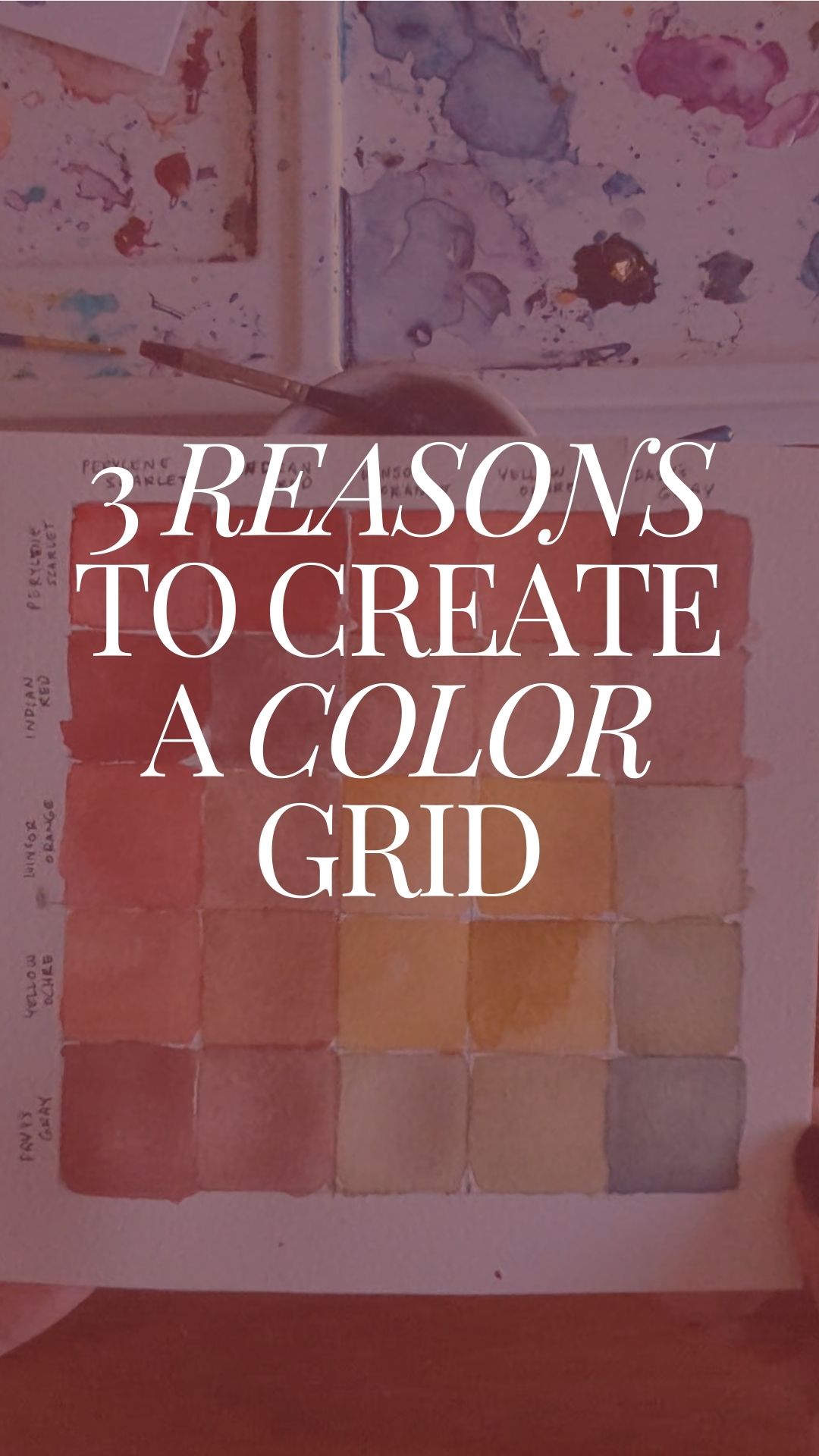You’ve just picked up your favorite watercolors—Da Vinci Davy’s Gray, Winsor Newton Winsor Orange, Yellow Ochre, Daniel Smith Perylene Scarlet, and Indian Red—but now what? You’ve seen stunning works of art and wonder how artists get their colors to harmonize so beautifully.
The answer? A color grid.
Creating a color grid is one of the best tools you can use to unleash the full potential of your paints. In fact, it’s a secret weapon for artists who want to dive deeper into color theory, save money on paints, and create more unique works. And the best part is, it’s not complicated—you can start with just five paints. I’ll show you how.
(Here’s a quick video where I walk you through making your own color grid from these five colors.)
Why Should You Create a Color Grid?
A color grid is more than a pretty grid of colors—it’s a roadmap for your creativity. It helps you see how colors interact and blend together, which is essential for creating beautiful, cohesive paintings.
Here are three powerful reasons why every artist should create a color grid:
1. Master Color Theory
The first reason is pretty simple: a color grid lets you practice color theory without having to guess what your final result will be. By swatching different combinations of your colors, you’ll see how they mix, what tones and shades you can create, and which colors work harmoniously together.
For example, combining Winsor Orange with Indian Red gives you a warm, muted tone that’s perfect for sunset skies or autumn leaves. Add a touch of Davy’s Gray, and you’ve got a soft neutral that’s ideal for shadows or subtle backgrounds. This knowledge is invaluable when you’re trying to create depth or mood in your artwork.
Creating a color grid also helps you develop an intuitive sense for how different colors interact. You’ll be surprised at how just five colors can yield dozens of possibilities.
2. Spend Less, Create More
If you’ve ever walked down the art supplies aisle and felt overwhelmed by the sheer number of paint options (and prices), you’re not alone. It can feel like you need all the colors to create a successful painting. But in reality, having a solid color grid can save you both time and money.
By mixing your own colors, you’re not only getting more use out of each tube of paint, but you’re also creating custom hues that you can’t find anywhere else. Your painting will stand out as unique, and you’ll learn that you don’t need to buy a dozen different colors for every project—just a few key pigments.
And let’s face it, friend, the fewer trips we make to the art store, the more time we have to actually paint! A color grid is a perfect way to invest in a limited set of paints and still have endless creative options.
3. Unleash Your Unique Style
Every artist has a distinct voice, and your color choices are a big part of that. By creating a color grid, you gain more control over your palette, allowing you to develop a style that is truly your own.
Instead of relying on pre-mixed colors, you can experiment with unique blends. You might find that a combination of Perylene Scarlet and Yellow Ochre creates a vibrant, golden orange that becomes a signature color in your work. Or, you might discover a soft, muted pink when you mix Winsor Orange with a hint of Davy’s Gray. These custom colors are what set your work apart and help you grow as an artist.
Creating your own color grid allows you to explore these nuances and push your creativity further. It’s a practice that goes beyond theory—it becomes part of your personal artistic journey.
Ready to Dive Deeper? Join Watercolor Foundations!
Learning how to create a color grid is just the beginning. If you’re ready to take your watercolor skills to the next level, I’d love to invite you to join my Watercolor Foundations course. This six-module class walks you through everything you need to know about watercolor painting—from paper and brushes to mastering techniques like wet-on-wet and color mixing.
The more you understand why and how to use your materials, the less you waste (say goodbye to muddy colors and wrinkled paper!) and the more you’ll enjoy painting. Whether you’re a beginner or someone looking to refine your skills, this course is designed to eliminate the frustration and help you paint with confidence. Click here to learn more about Watercolor Foundations and start framing your own work with pride.

Leave a Comment +